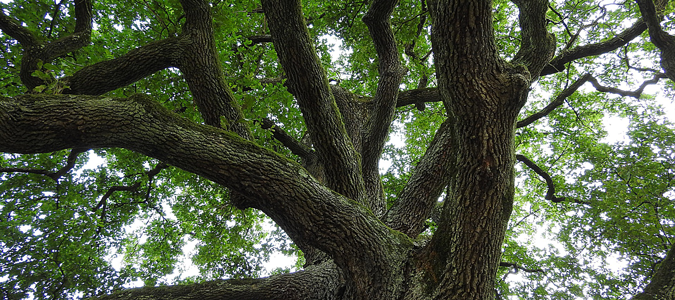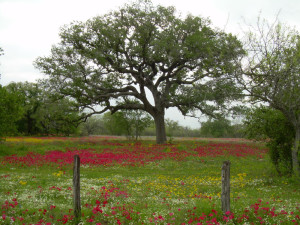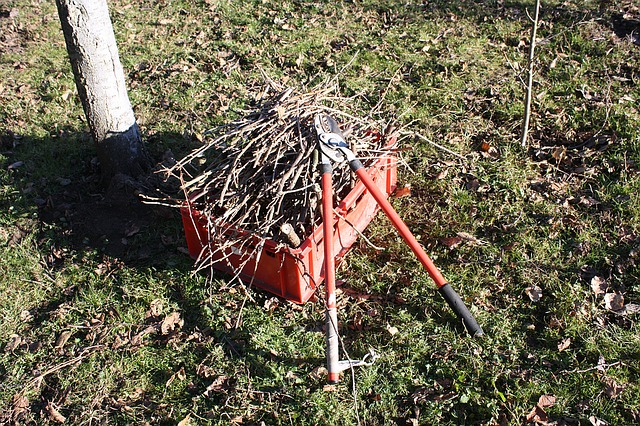
We’ve had some crazy weather in College Station recently. Between the tornadoes and floods, Mother Nature has wreaked havoc on our neighborhood. And speaking of nature, our trees are also on the receiving end of these recent severe weather patterns.
Local workers have been busy cleaning up downed trees. Oversized limbs are too large to haul off, so they must be cut into smaller chunks. Some trees have so much damage that they need to be removed entirely. And unfortunately, these broken trees can cause injuries to our homes and power lines.
We can’t control the weather, but we can attempt to take better care of our trees to limit destruction of property after massive storms.
So what is the best way to maintain our trees?
 First, identify the type of trees on your property and educate yourself about them. Trees commonly grown in the College Station area are oak, pecan, elm, cedar, and pear trees, to name a few.
First, identify the type of trees on your property and educate yourself about them. Trees commonly grown in the College Station area are oak, pecan, elm, cedar, and pear trees, to name a few.
Once you know the trees on your property, learn about what type of maintenance they require. Most trees that do well in our area need only small amounts of water, so you generally won’t have to water them unless you are planting a new tree or experiencing a severe drought.
Before beginning any maintenance, check your city ordinances and regulations to make sure you know the appropriate times of year for tree care. Many cities regulate tree maintenance to protect the natural cycles of trees, so you may only have a small window of time to complete tasks like pruning.
You now have all the necessary information about trees on your property. If you’re dealing with established trees, here are the main things to keep in mind.
Protecting your trees and home from damage.
 Prune trees during approved maintenance windows. Trees can require trimming for various reasons – to remove diseased limbs, thin out branches, reduce height, or even for aesthetic appeal. Whatever the reason, it is important to evaluate the trimming job at hand and decide if you want to take it on yourself or hire a professional.
Prune trees during approved maintenance windows. Trees can require trimming for various reasons – to remove diseased limbs, thin out branches, reduce height, or even for aesthetic appeal. Whatever the reason, it is important to evaluate the trimming job at hand and decide if you want to take it on yourself or hire a professional.
The best time for pruning is in late fall or winter when the impact on the tree’s health is minimal. For any given pruning job, keep in mind that the goals are to remove the unwanted limb while protecting the trunk of the tree, and to remove no more than 25% of the tree’s crown, except in cases of storm damage or power line interference.
Check trees for disease and pests, and treat accordingly. Many different pests can attack a tree. Between insects, birds, parasitic plants, fungus, and bacteria, there is a lot to look for on our trees.
Rather than research all of these potential invaders, become familiar with how your trees look on a regular basis. If you start seeing changes in your trees, research them to find out what type of invasion you might be dealing with and how to best increase your tree’s chances of survival.
Most pests and disease agents can be eradicated more readily if you catch them early on. Looking at your trees frequently will also help you identify any dying or rotted out trees – a significant hazard during storms.
Make sure your trees receive the right amount of water: too much or too little can be fatal. Although established trees usually need little in the way of water, some of our more extreme weather is cause for more water-related intervention. Severe droughts can tax even the deepest of tree root systems.
Conversely, flooding can drown the roots of a tree, causing parts of the tree or the whole tree to die. During severe droughts, check the soil around your trees with a metal rod. If the soil is moist to a depth of about 18 inches, the tree is receiving adequate water. If not, water the tree with a soaker hose.
For trees experiencing drowned roots in floods, siphon off as much water as possible and remove any mulch covering the tree. Uncovering the ground will allow the roots to dry off more quickly. Adding a nitrogen-rich fertilizer after the roots have dried will also help the tree to recover its strength.
An ounce of prevention is worth a pound of cure.
Mother Nature is full of surprises – that will never change. However, a little regular maintenance can help keep your trees and your home safe from weather-related damages.